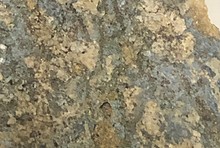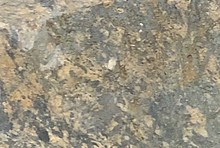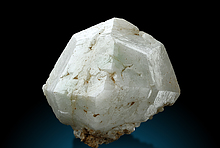Home PageAbout MindatThe Mindat ManualHistory of MindatCopyright StatusWho We AreContact UsAdvertise on Mindat
Donate to MindatCorporate SponsorshipSponsor a PageSponsored PagesMindat AdvertisersAdvertise on Mindat
Learning CenterWhat is a mineral?The most common minerals on earthInformation for EducatorsMindat ArticlesThe ElementsThe Rock H. Currier Digital LibraryGeologic Time
Minerals by PropertiesMinerals by ChemistryAdvanced Locality SearchRandom MineralRandom LocalitySearch by minIDLocalities Near MeSearch ArticlesSearch GlossaryMore Search Options
The Mindat ManualAdd a New PhotoRate PhotosLocality Edit ReportCoordinate Completion ReportAdd Glossary Item
Mining CompaniesStatisticsUsersMineral MuseumsClubs & OrganizationsMineral Shows & EventsThe Mindat DirectoryDevice SettingsThe Mineral Quiz
Photo SearchPhoto GalleriesSearch by ColorNew Photos TodayNew Photos YesterdayMembers' Photo GalleriesPast Photo of the Day GalleryPhotography
╳Discussions
💬 Home🔎 Search📅 LatestGroups
EducationOpen discussion area.Fakes & FraudsOpen discussion area.Field CollectingOpen discussion area.FossilsOpen discussion area.Gems and GemologyOpen discussion area.GeneralOpen discussion area.How to ContributeOpen discussion area.Identity HelpOpen discussion area.Improving Mindat.orgOpen discussion area.LocalitiesOpen discussion area.Lost and Stolen SpecimensOpen discussion area.MarketplaceOpen discussion area.MeteoritesOpen discussion area.Mindat ProductsOpen discussion area.Mineral ExchangesOpen discussion area.Mineral PhotographyOpen discussion area.Mineral ShowsOpen discussion area.Mineralogical ClassificationOpen discussion area.Mineralogy CourseOpen discussion area.MineralsOpen discussion area.Minerals and MuseumsOpen discussion area.PhotosOpen discussion area.Techniques for CollectorsOpen discussion area.The Rock H. Currier Digital LibraryOpen discussion area.UV MineralsOpen discussion area.Recent Images in Discussions
Identity HelpKipawa Thorite
25th Sep 2009 13:19 UTCReiner Mielke Expert
However mine fluoresce a strong bright green in short and longwave UV. They are also strongly radioactive and tan to brown with a conchoidal fracture and in long crystals with a square cross-section. If not for the fluorescence I would have called it thorite. Opal is reported from that occurrence and I am thinking that what I have is opal pseudomorph thorite. My question is, "is the thorite in the mindat photo fluorescent? " I am thinking that maybe all the thorite from that place has been replaced by silica.
27th Sep 2009 01:05 UTCReiner Mielke Expert
27th Sep 2009 05:16 UTCMatt Neuzil Expert

27th Sep 2009 14:23 UTCMichael J. Bainbridge Expert
27th Sep 2009 16:49 UTCRob Woodside 🌟 Manager

27th Sep 2009 17:26 UTCLászló Horváth Manager
Laszlo
27th Sep 2009 19:31 UTCReiner Mielke Expert
The fluorescence is not a coating, if you break one of the xls up the fluorescence is throughout. I have had a closer look with a UV pointer and some areas of some xls and some xls do not fluoresce at all. The non-fluorescent sections and xls tend to be are darker brown and some are dark brown. Although I have one that does not fluoresce and it is yellow-brown to tan just like the ones that do fluoresce! I am assuming that the non-fluorescent ones are unaltered thorite. Some crystals are completely fluorescent, I am assuming they are completely altered.
Thornasite is a possibility but the colour doesn't match but that wouldn't be the first time a colour doesn't match. Anyone want some to play with? I have lots.
Mosandrite does not fluoresce and has a different luster ( glassy v. wazy )
27th Sep 2009 21:26 UTCPavel Kartashov Manager
Thorite itself usualy is nonfluorescent, but some metamict thorites don't containing Fe may be fluorescent in such colour, because any thorite contain some uranium.
Mosandrite usualy contain Th>>U, so it is nonfluorescent.

28th Sep 2009 01:14 UTCTim Jokela Jr
T

28th Sep 2009 13:29 UTCLászló Horváth Manager
I have heard such rumors for the last 10 years but they are probably groundless.
Laszlo

28th Sep 2009 14:18 UTCMichael J. Bainbridge Expert
"Thorite, calcite and sometimes gittinsite from Kipawa all fluoresce green under SW UV light. They can be recognized from each other in visible light. The thorite occurs as tan-coloured blocky grains and fluoresces an
intense lime-green colour. It is also very radioactive. The calcite occurs as a coating on fracture surfaces and so is more spread out, and fluoresces less bright than the thorite. I've never seen the green fluorescent gittinsite but the National reported that it exists? Gittinsite is powdery-white in visible light and is often associated with vlasovite as they are end members of a solid solution series."
A little off topic, but I can confirm the fluorescence of the gittinsite - greenish white under LW and bright green in SW. Looks like a whitish rind on vlasovite in visible light. I have photos of this in one of the CMN specimens, when I get a chance to upload them I'll let you all know here.
Cheers,
Michael
28th Sep 2009 14:56 UTCReiner Mielke Expert
Thank you Michael. My Thorite samples fluoresce bright green in long and short wave UV. Here is the catch, some fluoresces and some doesn't. Some of the crystals have non-fluorescent areas in them, some crystals in the same sample fluoresce, and some don't. I am proposing that the fluorescent areas and crystals are altered to fluorescent opal and the non-fluorescent ones are unaltered. Any disagreement?
Reiner
PS. The gittinsite and vlasovite fluoresce under short wave as you noted.

29th Sep 2009 03:52 UTCMichael J. Bainbridge Expert
29th Sep 2009 09:34 UTCPavel Kartashov Manager
What is metamict thorite from your point of view? It is mixture of amorphous silica (~opal) and thorianite. ;)

29th Sep 2009 15:00 UTCMichael J. Bainbridge Expert
I know a little knowledge is a dangerous thing - and again, keeping in mind that I'm looking to be educated, not to challenge anyone - but based on what I understand, and what's been discussed here, these are my thoughts:
1. If opal is the inevitable metamiction product of thorite, then so be it, but given Darryl's assertion that the thorite fluoresces, and knowing that opal does not always do so; couldn't it be that the fluorescent part is the thorite, and the non-fluorescent part the opal?
2. That having been said, isn't opal by definition hydrated amorphous silica? Where does the water come from in this equation?
3. If the only reason we're discussing opal, however, is the mention on the mindat Kipawa page, then I would point out there is no reference given, or description of its occurrence. Is it known here as an alteration product of the thorite? Is it known to fluoresce at this location?
4. It seems to me too that there are other possibilities based on what has been discussed so far:
a) If Laszlo has reason to believe that it could be thornasite (which he says is fluorescent), why was that possibility dismissed?
b) Couldn't the fluorescence be caused by minute inclusions - in uneven distribution - of some other known fluorescent, like the calcite?
c) Or, couldn't it even be something else entirely?
I just don't see how any conclusions can be drawn yet. If it is based on some piece of knowledge which hasn't been mentioned because it has been assumed to be universally understood, could someone please enlighten me (or point me in the right direction)? Otherwise, unless someone has some other information that is directly on point and definitive, it seems to me that tests will be required to conclude anything.
Or there may be a very simple answer to my long-winded post, which I'm looking forward to.
Bottom line: This has been an intriguing and informative discussion about a very interesting location which I hope continues, and ultimately encourages someone to do a proper study so we can all know for sure.
Thanks,
Michael
29th Sep 2009 20:58 UTCReiner Mielke Expert
If you go to page 17 in : Publication No: ARV65-06
Publication Title: Radioactive mineral occurrences in the Bancroft area
Author: J. Satterly,D.F. Hewitt
Publisher: Ontario Ministry of Northern Development and Mines, Ontario Geological Survey
Publication Date: 1957
Publication Series: Annual Report Volume
Location: 31C,31D,31E,31F,Ontario, Canada
They mention thorite from the Kemp property that has altered to Silica, in essence Opal. Also in that same article it talks about uranothorite ( a variety of thorite) that is metamict to silica and thorianite. Opal associated with uranium is very commonly fluorescent but thorite is not. In fact I can't find any literature that says unaltered thorite is fluorescent, hence the pseudomorph theory. Water would simply be surface water.
I suppose it might be thornasite but it has never been identified from Kipawa.Wish it were thornasite, much sexier than opal. However based on what is known about thorite alteration and opal it is most likely opal after thorite.
Reiner
29th Sep 2009 21:30 UTCReiner Mielke Expert
As far a opal is concerned check out : http://hal.archives-ouvertes.fr/docs/00/32/38/85/PDF/PL02078.pdf. In it they state "Not all opals are fluorescent, and two types of luminescence have been recognized. The first has a green color, is attributed to uranyl groups (Fritsch et al., 2001,2003) and is believed to be typical of common opals." etc.
Reiner

29th Sep 2009 22:26 UTCMichael J. Bainbridge Expert
I'm secretly keeping my fingers crossed for sexy thornasite for you though!

2nd Oct 2009 00:18 UTCMichael J. Bainbridge Expert
Just to let you know I've posted the vlasovite & gittinsite photos I mentioned.
http://www.mindat.org/photo-254380.html
2nd Oct 2009 00:55 UTCPavel Kartashov Manager
I am don't know Kola assemblage wich can be comparable with this. May be only best specimens of parakeldyshite/eudialyte intergrowth from Umbozerskii Mine. Occasionally fluorescention of parakeldyshite also is green and similar to gittinsite one of your specimen.
Unfortunately Mongolian gittinsite don't fluorescent at all. It is strange, but on whole Khaldzan Buragtag massif only K-feldspars, zircons and willemite has fluorescention.

2nd Oct 2009 04:07 UTCMichael J. Bainbridge Expert
2nd Oct 2009 12:39 UTCMaggie Wilson Expert
Here's some from Reiner's trip this summer. I just uploaded them this morning, so the child photos may be a while appearing.

2nd Oct 2009 14:26 UTCMichael J. Bainbridge Expert
4th Oct 2009 13:29 UTCReiner Mielke Expert
Thanks to Laslo's suggestion of Thornasite there has appeared a new twist. I thought I would try to determine if the samples where opal or Thornasite by placing a piece in HCl. Opal is insoluble in HCl but I thought Thornasite might be soluble with release of silica gel much like many of the other silicates at Kipawa. Much to my surprise it turns out that it is neither! The sample began to bubble and dissolve leaving behind a hard white porous mass that did not fluoresce nor was it radioactive. However the acid was radioactive indicating that the thorium and/ or uranium where leached from the sample.
The only uranium carbonate that I know of that fluoresces green under LW & SW is Liebigite but I know of no Thorium carbonates that fluoresce. Any suggestions to what the mineral that dissolved might be?

11th Jul 2012 18:42 UTCpharos
Calcite take thorium element when you put it on hcl, and your porous mass is silica from "opal"




Mindat.org is an outreach project of the Hudson Institute of Mineralogy, a 501(c)(3) not-for-profit organization.
Copyright © mindat.org and the Hudson Institute of Mineralogy 1993-2024, except where stated. Most political location boundaries are © OpenStreetMap contributors. Mindat.org relies on the contributions of thousands of members and supporters. Founded in 2000 by Jolyon Ralph.
Privacy Policy - Terms & Conditions - Contact Us / DMCA issues - Report a bug/vulnerability Current server date and time: April 23, 2024 06:02:38
Copyright © mindat.org and the Hudson Institute of Mineralogy 1993-2024, except where stated. Most political location boundaries are © OpenStreetMap contributors. Mindat.org relies on the contributions of thousands of members and supporters. Founded in 2000 by Jolyon Ralph.
Privacy Policy - Terms & Conditions - Contact Us / DMCA issues - Report a bug/vulnerability Current server date and time: April 23, 2024 06:02:38











